Introduction
Anyone who has witnessed a baseball in motion has observed projectile motion. A thrown baseball, a fired cannon ball, a cliff diver plunging off a cliff—these are all examples of projectile motion—motion where the only acceleration is that caused by gravity. A missile fired from a warplane is not a projectile—it has an engine. If the engine fails, then the missile becomes a projectile at the mercy of gravity.
Necessary Assumptions
This very common form of motion is surprisingly simple to analyze if the following assumptions are made:
- The acceleration due to gravity (g) is constant over the range of motion and is directed downward. (This assumption is reasonable as long as the range of motion is small when compared with the radius of the earth. In effect, this approximation is equivalent to assuming that the earth is flat over the range of motion considered.)
- The effect of air resistance is negligible. (This approximation is generally not justified, especially at high velocities. In addition, the spin of a projectile, such as a baseball, can give rise to some very interesting aerodynamic forces.)
- The rotation of the earth does not affect the motion.
Independence of Horizontal and Vertical Velocity Components
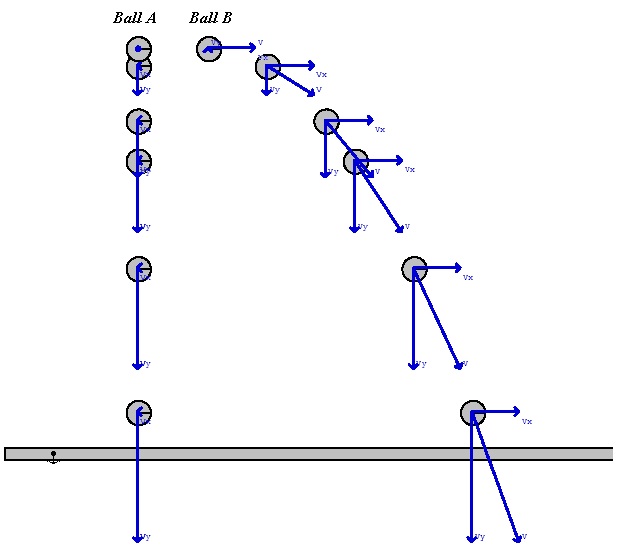 One key to solving problems involving projectile motion is to understand the independence of the horizontal and vertical components of a projectile’s velocity. Consider the following diagram showing two balls falling from the same height under the influence of gravity:
One key to solving problems involving projectile motion is to understand the independence of the horizontal and vertical components of a projectile’s velocity. Consider the following diagram showing two balls falling from the same height under the influence of gravity:
- Ball A is simply dropped, while ball B is given an initial horizontal velocity.
- Both balls will hit the floor at the same time and with the same downward velocity.
- Both balls will have the same vertical velocity everywhere during the fall, because gravity causes both to accelerate the same as they fall.
- Note that on ball B, the horizontal velocity does not change as the ball falls. This is because there is no acceleration horizontally; the only acceleration is downwards.
The motion horizontally does not affect the motion vertically. The horizontal and vertical components of velocity are independent.
In the animation above, the red ball falls while the blue ball is projected horizontally.
The vertical motion of the two balls are identical and exhibit acceleration.
The horizontal motion of the blue ball exhibts constant speed since there is no accelertion horizontally.
We can conclude that projectile motion is the superposition of two motions:
- the motion of a freely falling body in the vertical direction, and
- uniform motion in the horizontal direction with constant velocity.
Height, Time of Flight, Range
 From the graph to the right we can learn several things about the relationship between the angle of launch and the range and height a projectile can reach.
From the graph to the right we can learn several things about the relationship between the angle of launch and the range and height a projectile can reach.
- The first is obvious—the greater the angle of launch, the greater the height reached.
- The second, is that there are two angles—symmetrical about 45°—from which the same range can be reached. Projectiles launched at 15° and 75° land at the same spot. The same is true for 60° and 30°. Any two angles, whose sum is 90°, will give the same range.
- The third is that the maximum range possible is when the projectile is fired at an angle of 45°.
Height
Because the vertical and horizontal motions are independent, it should be obvious that the height a projectile reaches depends solely upon the vertical component of its initial velocity, uy.
Play with the animation below to see the consequences of the role of uy on the height for a projectile.
From the formula,![]() , the maximum height s becomes s=u2/(2g).
, the maximum height s becomes s=u2/(2g).
Time
The time during which a projectile is in the motion depends on how high it goes. The greater the height, the greater the time. Time, then depends also upon uy which controls the height.
Play with the animation below to see the consequences of the role of uy on the time of flight for a projectile.
From the formula v2=v1+2at, the total time for the whole trip becomes t=2v1/g
Range
The range of a projectlie is the horizontal distance it travels. Horizontally, there is no acceleration for a projectile so it travels across at a constant speed equal to the horizontal component of the projectile's velocity, vx.
The horizontal velocity vx depends upon the angle of launch, θ. Play with the animation below to see the consequences of vx and of θ on the range.
The Math
In addition to the usual problem solving steps, when solving projectile motion problems, you will need to present a vector diagram and a diagram representing motion of the projectile from its initial to its final positions.
initial velocity and velocity components
To solve projectile motion problems, any initial velocity will need to be broken into horizontal and vertical components.
Example - driving range
Suppose that a golf ball is struck on level ground at velocity of 25.0 m/s at an angle of 30.0° above the horizontal. The velocity components are . . .

Vertical Motion
The acceleration in the vertical direction is that of gravity. In the formulas we will use the symbol g for gravity and acceleration. On earth, this value is 9.8m/s2 downwards.
The vertical distance will be denoted with the symbol y.
From the motion formulas, we get
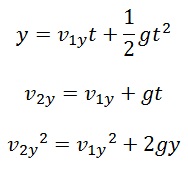
Example - driving range continued . . .
Suppose that a golf ball is struck on level ground at velocity of 25.0 m/s at an angle of 30.0° above the horizontal. Find the maximum height reached and the time that the ball is airborne.

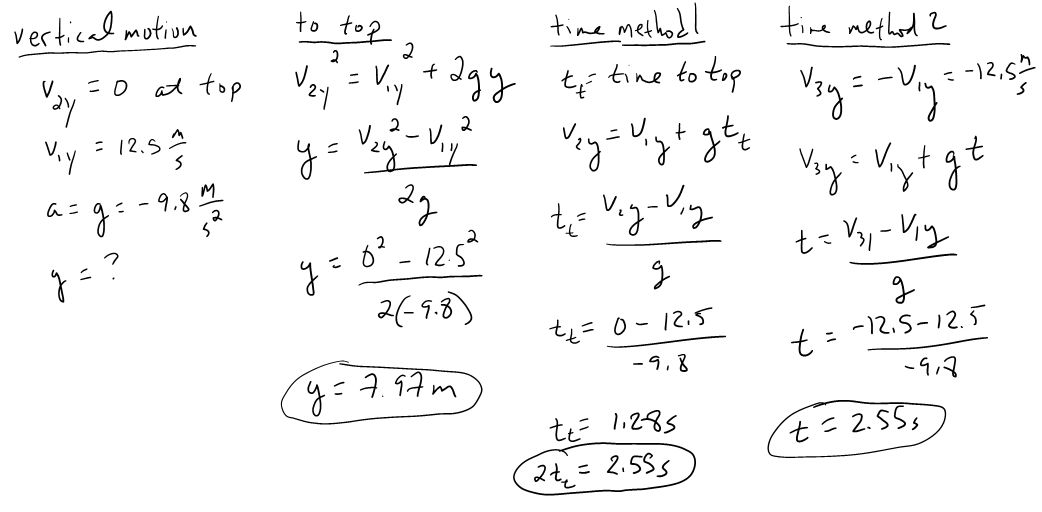
Notes: If the projectile returns to the same height at the end, then
- the initial vertical velocity has the same magnitude as the final vertical velocity.
- the time to the top of its flight is one-half of the total time for the trip
Horizontal Motion
There is no acceleration horizontally for projectile motion, so there is only one possible formula to use. In this formula, the range is denoted with the symbol x.

Example - driving range continued . . .
Suppose that a golf ball is struck on level ground at velocity of 25.0 m/s at an angle of 30.0° above the horizontal. Find the range of the golf ball.


Example 1 - driving off a cliff
A) the distance from the base of the cliff to where the car enters the sea
B) the final velocity of the car as it enters the sea.
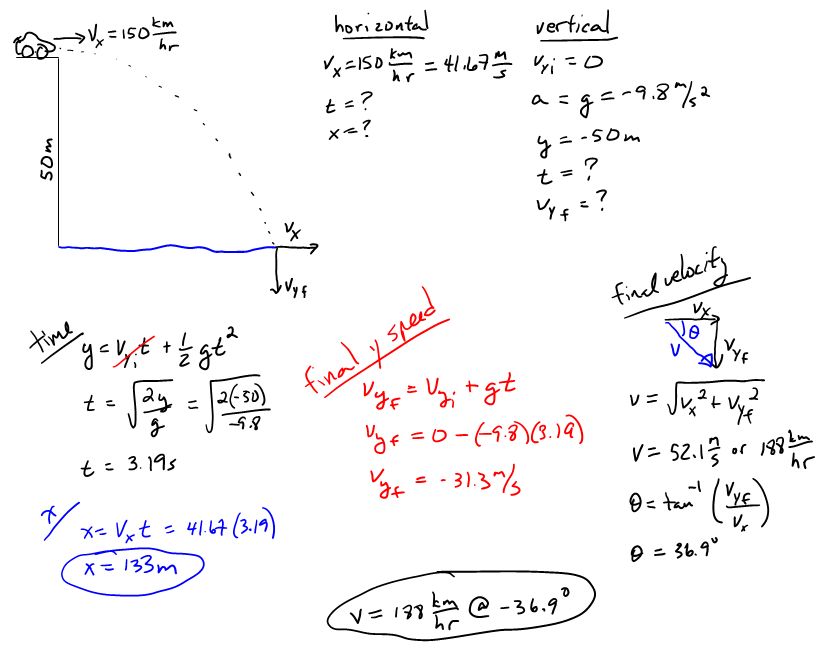
Example 2 - water balloon fight
A) the height above the ground reached by the water balloon
B) the time the water balloon is airborn
C) the range of the water balloon.
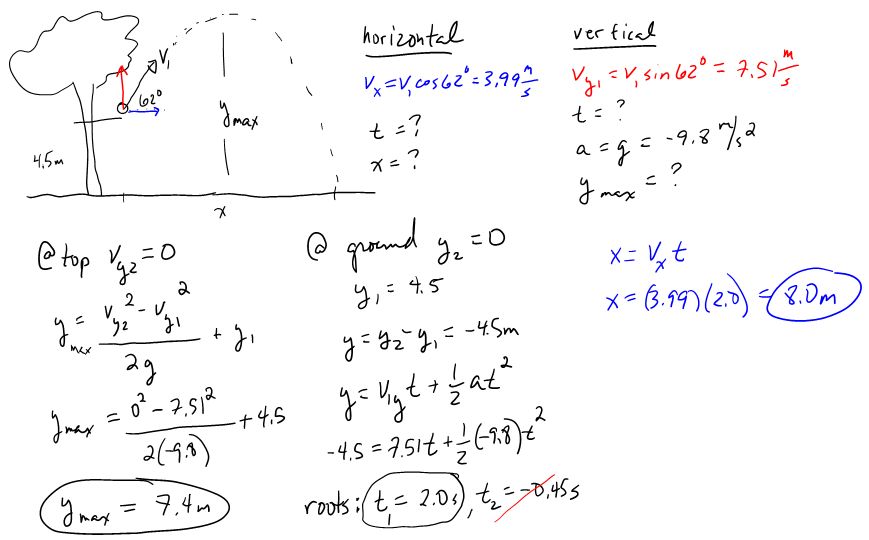
Example 3 - solving for initial conditions
A) the time the projectile is in the air
B) the angle of launch
C) the initial speed.
A) the time the projectile is in the air
B) the angle of launch
C) the initial speed.
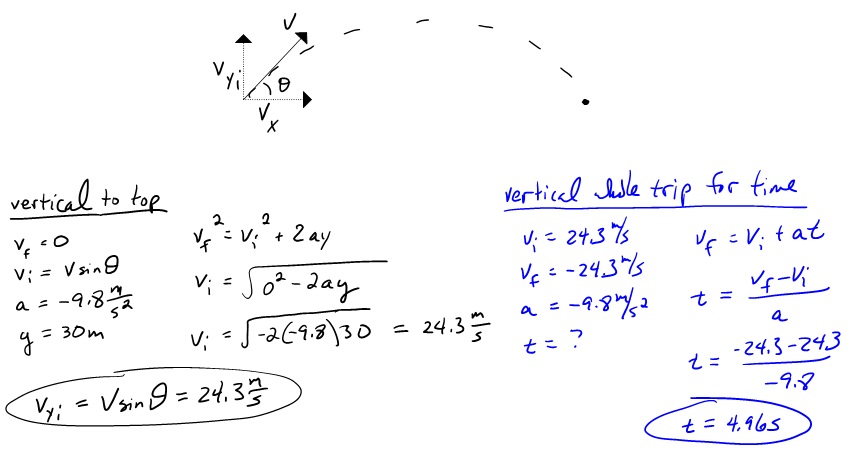
A) the time the projectile is in the air
B) the angle of launch
C) the initial speed.
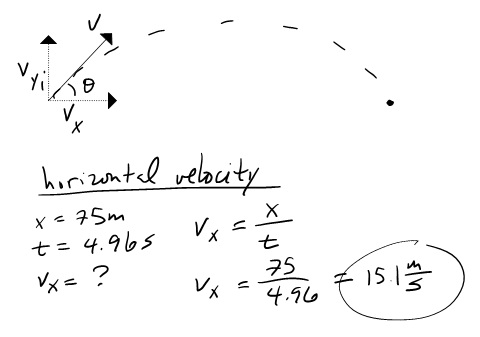
A) the time the projectile is in the air
B) the angle of launch
C) the initial speed.
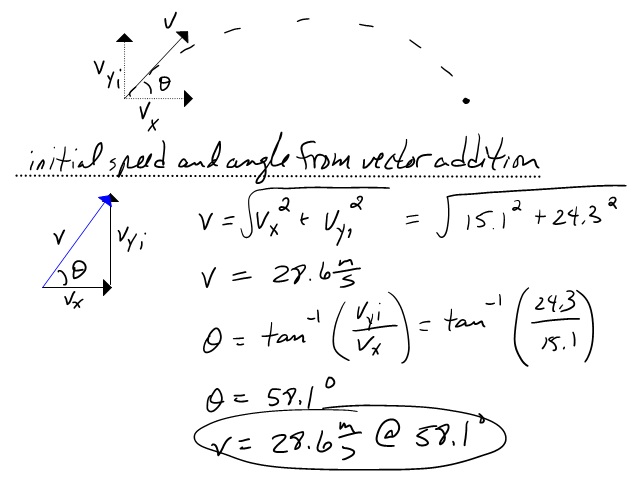
Example 4 - the burning building
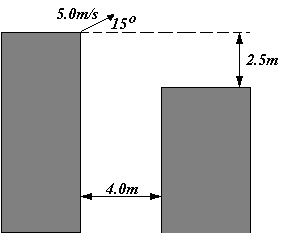


Practice
